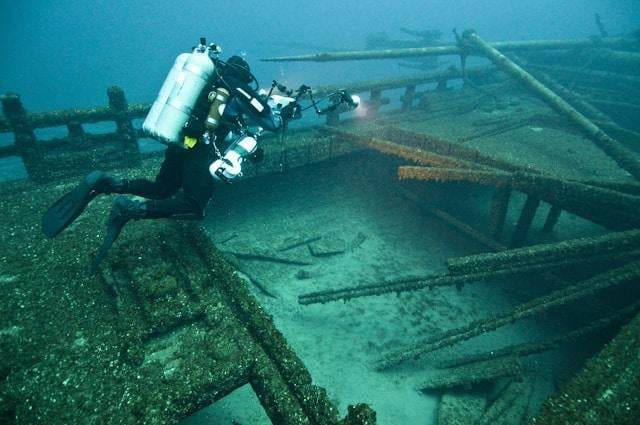The vast and mysterious depths of the oceans have long captivated the imagination of scientists and explorers alike. With more than 80% of the ocean floor remaining unexplored, understanding these enigmatic realms is crucial for unraveling Earth’s geological, biological, and ecological mysteries. In this pursuit, subsea imaging has emerged as an indispensable tool, offering unprecedented insights into the hidden landscapes and life forms thriving beneath the waves. This article explores the pivotal role of subsea imaging in facilitating new scientific discoveries and expanding the understanding of the oceanic realm.
Unveiling Hidden Landscapes:
Subsea imaging technologies such as multibeam sonar and autonomous underwater vehicles (AUVs) equipped with high-resolution cameras enable scientists to peer beneath the ocean’s surface with unparalleled clarity. These tools produce detailed maps and images of underwater landscapes, unveiling geological features such as seamounts, trenches, and hydrothermal vents. By studying these formations, researchers gain valuable insights into plate tectonics, volcanic activity, and the processes shaping the ocean floor over millions of years.
Revealing Biodiversity Hotspots:
The ocean depths harbor a rich tapestry of life, much of which remains undiscovered. Subsea imaging allows scientists to explore and document this biodiversity by capturing images of deep-sea ecosystems and their inhabitants. From vibrant coral reefs to mysterious deep-sea creatures, these images provide crucial data for understanding species distribution, behavior, and interactions. Moreover, subsea imaging helps identify biodiversity hotspots, informing conservation efforts aimed at preserving these fragile marine ecosystems.
Studying Marine Habitats:
Subsea imaging plays a vital role in studying diverse marine habitats, from shallow coastal waters to the abyssal plains. By combining imaging techniques with environmental sensors, researchers can assess habitat complexity, substrate composition, and hydrodynamic conditions. This integrated approach enables scientists to evaluate the health and resilience of marine ecosystems, monitor changes over time, and identify potential threats such as pollution, habitat degradation, and climate change impacts.
Investigating Ocean Dynamics:
The ocean is a dynamic and interconnected system influenced by complex physical processes such as currents, upwelling, and mixing. Subsea imaging allows scientists to visualize these ocean dynamics in unprecedented detail, capturing phenomena ranging from eddies and gyres to underwater turbulence and thermohaline circulation. By studying these dynamics, researchers gain insights into climate variability, nutrient cycling, and the transport of marine organisms and pollutants across vast oceanic distances.
Exploring Extreme Environments:
Some of the most extreme environments on Earth exist beneath the ocean’s surface, including deep-sea hydrothermal vents, cold seeps, and methane hydrate deposits. Subsea imaging enables scientists to explore these hostile habitats and study the unique life forms adapted to survive in such extreme conditions. By documenting these ecosystems, researchers uncover new species, novel biological adaptations, and insights into the origins of life on Earth. Furthermore, the exploration of extreme environments has implications for astrobiology, offering clues to the potential for life on other worlds.
Advancing Technological Innovation:
The development of subsea imaging technologies continues to drive technological innovation in fields such as robotics, sensor technology, and data analytics. From autonomous underwater drones to advanced imaging systems, these innovations expand the capabilities of scientists to explore and study the ocean depths. Furthermore, advancements in machine learning and artificial intelligence are enhancing the efficiency and accuracy of data analysis, enabling researchers to extract valuable insights from vast volumes of subsea imagery.
Shedding Light on Oceanic Connectivity:
Subsea imaging illuminates the intricate network of connections that exist within the ocean, from the migration patterns of marine species to the dispersion of nutrients and pollutants. By tracking the movement of organisms and materials across different oceanic regions, researchers gain insights into ecological processes, population dynamics, and the resilience of marine ecosystems. This understanding of oceanic connectivity is crucial for effective conservation and management strategies aimed at preserving biodiversity and ecosystem services.
Unraveling Historical Mysteries:
Subsea imaging serves as a time machine, allowing scientists to delve into the past and unravel historical mysteries hidden beneath the ocean’s depths. From ancient shipwrecks to submerged archaeological sites, these underwater treasures provide valuable insights into human history, culture, and maritime exploration. By employing advanced imaging technologies and underwater robotics, researchers can reconstruct past environments, document cultural artifacts, and preserve the shared maritime heritage for future generations.
Conclusion:
Subsea imaging has revolutionized the understanding of the ocean, unlocking new scientific frontiers and revealing the hidden wonders of the deep. By providing detailed maps, images, and data of underwater landscapes, ecosystems, and dynamics, subsea imaging technologies empower researchers to make groundbreaking discoveries and address pressing environmental challenges. As technological advancements continue to push the boundaries of exploration, the future promises even greater revelations from the depths of the oceans, ushering in a new era of oceanic enlightenment and conservation.








Leave a Comment
You must be logged in to post a comment.